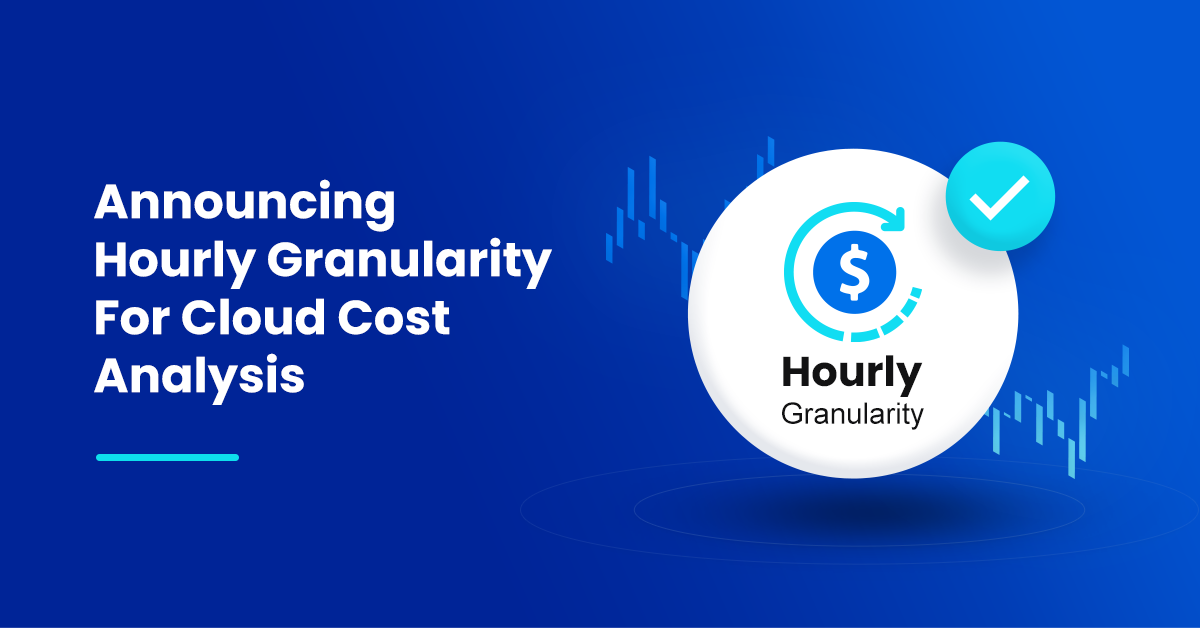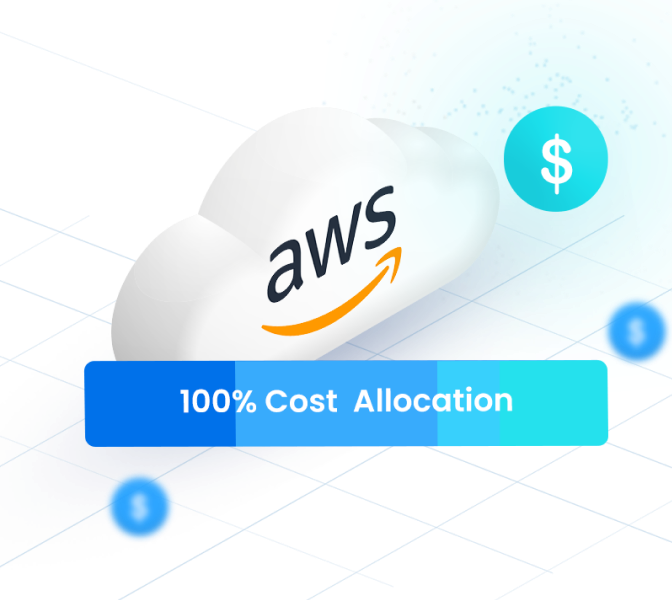- Blog
- Cost Allocation & Reporting
- nOps Enhances Cloud Visibility with Hourly Granularity Update
nOps Enhances Cloud Visibility with Hourly Granularity Update
Last Updated: May 21, 2025, Cost Allocation & Reporting
nOps was recently ranked #1 by G2 in the cloud cost management category because of the innovative cloud solutions that help businesses optimize their cloud usage and increase performance simultaneously. nOps is an innovative, real-time Cloud platform for automated FinOps solutions. With our advanced price consideration engine, we consistently pick the right cloud instances at the right price, ensuring maximum cost savings with 100% reliability.
One of the biggest customer challenges we have noticed is that users face difficulty understanding and managing their cloud spend due to insufficient visibility and complex cost attribution. As a solution to this, nOps offers Business Contexts that not only helps you monitor cloud usage or tag resources but is a comprehensive platform for exploring and analyzing your cloud spend.
It allows you to track and attribute costs, including usage types, operations, and meaningful item types, with the power to amortize fixed expenses. It facilitates building powerful reports for stakeholders, providing a detailed view of your cloud infrastructure and costs, enhancing decision-making and cloud management strategies.
For granularity, we were offering daily, weekly, monthly, and quarterly visibility that has helped our customers in cloud cost optimization. But now, to improve further, we are announcing hourly granularity as well.
In a world where workloads constantly scale up and down, and cloud billing occurs hourly in units of milliseconds, effectively analyzing, forecasting, and optimizing your cloud environment based on daily spend is nearly impossible. Let’s explore how nOps’ new hourly resolution feature, built on Apache Druid, can elevate your cloud analysis to the next level. Read through!
The Lack Of Hourly Visibility
While the cloud offers scalability and flexibility, it also introduces a new set of challenges. One such challenge is the lack of visibility into resource usage. Especially the lack of granularity can lead to inefficiencies, such as overprovisioning resources or failing to turn off unused resources, resulting in unnecessary costs.
In our years of experience with customers from different sectors and industries, we have observed that 7/10 companies tend to over-commit due to a lack of granular understanding. To explain the intensity of this challenge, consider this: you have committed to a savings plan (in the hope of comparatively cheaper resources). With these commitments, you are billed in increments of hours, and as you have already paid in advance, each hour of inactivity can lead to massive losses. In total, you end up losing more than you aimed at saving with the commitment.
This is exactly why hourly granularity is needed. With the same, users can analyze their costs in detail for each hour of the day across all of the dimensions that contribute to spending at the account, service, or resource level, with powerful filters that allow you to group resources into categories of meaning. Once you have this data, it becomes much easier to understand, analyze, predict, and commit accordingly.
Announcing Hourly Granularity For Cloud Cost Analysis
To address these challenges, we are thrilled to announce the launch of our new feature – “Hourly Granularity,” into cloud cost analysis of AWS data. This feature provides cloud users with access to hourly usage graphically, offering enhanced cost visibility, cost allocation, and predictive analysis. The Hourly Granularity feature of nOps showcases its immense data processing capacity as it allows for the detailed observation of hourly costs over a 30-day period.
Additionally, underutilization is one of the most important challenges that we are trying to solve at nOps. AWS’ hourly billing implies commitments are being delegated in increments of hours; thus, a daily view of cloud costs will not help much in the understanding of commitment patterns that are changing on an hourly basis. With the hourly resolution, users can have a magnifying view of the resources.
Given the two screenshots below, we can understand the importance of hourly granularity on a detailed note.
The first image represents the “Daily view” of resource usage over a two-day period. The graph illustrates a high and consistent level of usage, suggesting that a commitment to a high usage limit could be a viable option. However, this representation does not accurately reflect the actual usage pattern.
Additionally, with an hourly view, it is a lot easier to get a comprehensive understanding of your total EC2 usage and how it varies over different hours. In the above example, considering the higher limit as per the daily view, if the user commits to covering usage costs at a rate of $2.50 per hour, and then the cost decreases to $1.25 per hour, the user would still be obligated to the higher rate even when the usage is much lower. Thus, in comparison to the daily view, the hourly view provides a more detailed understanding of resource consumption that not only helps in making informed decisions but helps you save a lot.
With an hourly view, one can effectively assess how much of their usage is covered by commitments, such as Savings Plans, how much by Reserved Instances, and how much by on-demand usage. This approach aids in identifying opportunities to shift workloads to Spot, which provides greater flexibility.
In cases where a user is underutilizing commitments, a more sophisticated method is to be able to schedule workloads on the most cost-optimal options available. You can read more about this process here: How Can I Optimize My Unused Reserved Instances And Savings Plans?
Furthermore, unit economics is a powerful method of empowering teams to take ownership of the cost of the services and features that they deliver. The hourly view provided by nOps aligns with the public cloud’s billing cycle and enables precise cost visibility for service delivery. This level of detail not only allows users to track the cost impact of tuning and rightsizing at the infrastructure level but also facilitates a deeper analysis of the financial implications of application-level adjustments.
For example, consider a service like Druid, which has two key components: compute and storage. If a team chooses to use a larger instance size to process and ingest data more quickly, the unit economics approach allows the team to accurately measure the cost implications of this decision. Conversely, if they make an adjustment to the frequency of data ingest, the impact is equally clear. These are examples of actual cost optimization exercises that nOps uses hourly granularity to track and test for effectiveness.
Essentially, hourly resolution facilitates data-driven decisions and can drive improvements in both performance and cost-effectiveness. This approach ensures that every decision made takes the overall financial health of the organization into account.
Here’s how Hourly Granularity can help your organization:
- It empowers organizations with the ability to forecast spend with greater accuracy, facilitating the adoption of FinOps, minimizing cloud waste, and promoting alignment between procurement and engineering teams.
- This feature also doubles as a robust troubleshooting tool for engineers, providing them with the means to delve into service usage, performance, cost allocation, and cost issues on an hourly basis.
- It enables the detection of hourly usage cycles of resources, thereby aiding in making informed decisions about when to activate or pause resources based on usage patterns.
What Sets nOps’ Hourly Resolution Apart?
One standout feature of nOps’ Hourly Granularity is its capability to observe Hourly costs in a 30-day timeframe compared to a 14-day timeframe on AWS. This expanded visibility provides a more detailed and comprehensive understanding of your costs, enhancing your ability to track costs effectively and make strategic decisions.
Additionally, nOps “Cost Allocation” feature allows users to create filters that empower them to track different categories with a lot more efficiency than the manual approach. For example, with specified filters, one can effectively analyze the different services that are contributing to the spend. And the “Cloud cost Analysis” integration helps you view the costs in real-time interactively in the nOps dashboard.
How Does It Work?
To achieve hourly granularity from the Druid perspective, we needed to make changes to how we handle and ingest the data for hourly projection. These changes had to be implemented in the most crucial parts of Druid:
- CUR Data Format Generation: We use the clients’ CUR data in Parquet format, which contains their complete usage on AWS on an hourly basis.
- Query Granularity in Druid: Next, we process the clients’ Parquet data into Druid with “hourly” query granularity.
- Segments in Druid: During the Druid ingestion, we also break the data into proper segments, which give us optimized query performance and the fastest ingestion time.
- Present Data: Finally, we perform the hourly queries to project the clients’ usage of AWS in an hourly format.
Addressing the challenge of visibility in cloud resource usage, hourly granularity offered by nOps has empowered users with detailed hourly cost insights, facilitating precise forecasting, cost allocation, and the efficient adoption of FinOps practices.
We’re excited to see how the hourly resolution will help your organization optimize cloud infrastructure, save time, and reduce costs.
By incorporating nOps as part of your cloud cost visibility strategy, you can:
- Pay less for what you use
- Use less by pausing idle resources automatically
Let engineers focus on engineering; let nOps focus on FinOps.
Let us help you save! Sign up for nOps or Book a demo call today.









